* as well as they should.
Some time ago I posted a rant about things that don’t work, at least not as they should (http://billadamsphd.net/2017/04/24/ten-things-that-dont-work/). Those things included cell phones, ice-dispensers, gift cards, and others.
Here’s a list of a few more things that don’t work but somehow, inexplicably, flourish in the market as viable products and services.
- Streaming Movies
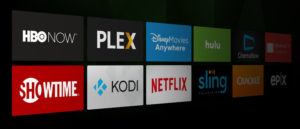 People don’t go to the movies anymore, not in the numbers they used to. They’re ‘staying away in droves.’ Part of that is price, but also the advent of large television screens and home theaters.
People don’t go to the movies anymore, not in the numbers they used to. They’re ‘staying away in droves.’ Part of that is price, but also the advent of large television screens and home theaters.
I hardly ever go to movies anymore, mainly because most movies seem targeted to children and are not for me. But also the journey across town to a theater is an obstacle, and parking, and then the admission price is too high. They can pump up the volume on the sound until the contents of my stomach curdle and it’s still not worth $12.
On the other hand, everyone and their dog now “streams” video online, from Netflix, Amazon, the cable provider, or whoever else is peddling movies. I’ve done it. It’s easy, fast, and cheap.
The problem is the catalog. Having all those movies digitized for on-demand access was supposed to be a boon for people like me, the outlier who doesn’t care about the next superhero and who has had it up to here with explosion movies. It was supposed to be economically feasible to serve ‘long-tail’ customers like me who enjoy thoughtful and artistically done films which are not profitable to the mass market. Hasn’t worked out that way.
I have to spend an inordinate amount of time scrolling through providers’ film lists looking for movies that interest me. It’s all the more difficult because if I click on something I might be interested in, the entire list of movies presented is suddenly changed to emphasize those similar to what I just clicked on, even if (as usual) I reject it. I am therefore not free to pursue my own interests without interference by oxymoronic ‘artificial intelligence’.
For example, I recently got onto a ‘film noir’ kick for a while and watched, and enjoyed, “Night and the City” and “Elevator to the Gallows.” But after that, whenever I want to browse for another movie, I’m flooded with old black-and-whites from the ‘50’s and ’60’s and enough Alain Delon films for a lifetime.
If I want to see (again!) Goodfellas and Silence of the Lambs, no problem. But if I’m interested in “The Conformist,” “Dogville,” or an old Jean Reno movie like “Crimson Rivers,” I have a much more difficult search ahead of me. Those are not movies easily browsed because they do not appear in the endless lists of ‘Most Popular!’ ‘Recent Hits!’ ‘Family Drama!’, and so on. You have to already know about those films by other means to find them online.
 So the reason streaming video doesn’t work is because of the catalogs. They are not well-indexed and tagged and therefore almost impossible to search if you want anything other than the latest cartoon or monster movie.
So the reason streaming video doesn’t work is because of the catalogs. They are not well-indexed and tagged and therefore almost impossible to search if you want anything other than the latest cartoon or monster movie.
My solution is the video store. I’m lucky to have an excellent one near me, clogged floor to ceiling with DVD’s in a broad set of categories. DVD’s are eminently browsable. You can see what’s there with a quick visual scan and read the boxes for details. The cost is the same as online rental. I always come away with a stack of good ones. Alas, I know that distribution model does not have long to live. I don’t know what I’ll do after the place folds.
- Electric Cars
 I recently purchased a smallish second car when my old Scion xB was eaten by rats. They didn’t do serious damage, just nibbled the insulation off some wires, but they got inside the cabin and stunk it up like an abandoned carcass. No amount of carpet shampoo or detailing could make that right. So it was new car time.
I recently purchased a smallish second car when my old Scion xB was eaten by rats. They didn’t do serious damage, just nibbled the insulation off some wires, but they got inside the cabin and stunk it up like an abandoned carcass. No amount of carpet shampoo or detailing could make that right. So it was new car time.
I looked seriously at an electric car and I considered the top hybrid models as well. Many of them are attractive. However, in the end, I bought a small, internal-combustion-engine hatchback (Chevy Sonic).
Electrics have not yet arrived, in my opinion, despite the hype. For one thing, they are quite expensive and even with the government subsidies, which are fast declining, you pay a hefty several-thousand-dollar premium for the privilege of going electric (or hybrid). But I looked past that.
Another problem is the batteries themselves. What am I buying there? It is extremely difficult to get information about the batteries, what they are, how they work, whether they are safe, how long they are expected to last, and so on. I supposed those are all “proprietary” secrets but call me old-fashioned, I want at least some concept of what I’m buying.
 I learned, for example, from a garage mechanic, not from any online research, that the battery packs in a Toyota Prius cost about $5,000 to replace, and there are two of them. They last about five years, putting out less and less power with each charge until finally you have to replace them. Maybe the car is only designed to last 5 years, but in my mind, that’s a $10K hidden cost of ownership that does not appear with the sticker price. I don’t know what the comparable numbers would be for a Bolt or a Volt or a Leaf, or any of the others, and nobody will say.
I learned, for example, from a garage mechanic, not from any online research, that the battery packs in a Toyota Prius cost about $5,000 to replace, and there are two of them. They last about five years, putting out less and less power with each charge until finally you have to replace them. Maybe the car is only designed to last 5 years, but in my mind, that’s a $10K hidden cost of ownership that does not appear with the sticker price. I don’t know what the comparable numbers would be for a Bolt or a Volt or a Leaf, or any of the others, and nobody will say.
Also, you cannot just park an electric vehicle in your garage and expect it to perform when you need it. The electrics are designed to be driven, the batteries discharged and charged continuously. I only use my second car a few times a week for errands around town. Most of the time it stays parked. But that’s no good. If you don’t drive an electric every day, the battery can go flat, and once it does, it cannot be revived. The electrics are designed for commuters, or at least for some kind of a hectic lifestyle I don’t engage in anymore.
The “range anxiety” problem is gradually reducing, and is not even a serious problem with the new hybrids. Charging stations are popping up all around down, though I still would never try to drive an electric from Tucson to Los Angeles.
Finally, nearly all electricity in my part of the country comes from burning coal, so there is no environmental benefit from going electric, so that’s not even a consideration.
I think electrics are the future, more so than hydrogen power, but that future is still quite a ways off. Electric cars are a product that’s not quite there yet.
- E-Books
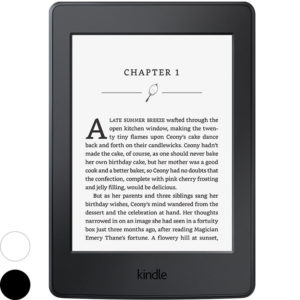 I have several Kindles and I also sometimes read e-books on a tablet, but every time, it’s an unpleasant experience.
I have several Kindles and I also sometimes read e-books on a tablet, but every time, it’s an unpleasant experience.
The main problem with e-books is navigation. You can’t easily see where you are in the book, can’t easily glance ahead or behind. It’s not easy to flip to the footnotes or the index or the table of contents, and if you do, you most likely will lose your place. Reading an e-book is like reading through a soda straw.
I use e-books when there are few, or no alternatives. One common case is for a book that costs too much in paper, which I consider to be over $30 or so. If I can get an e-book for $10 that costs $50 otherwise, I do it. That doesn’t come up as often as it used to, since E-books are now priced almost the same as paper, just a few dollars less usually, so I buy the paper.
A second good use of e-books is for textbooks. When I was teaching, I was loathe to lug around a six-pound, thousand-page book of statistics, but I had to do it. When textbooks finally became available online I switched to that medium and I could carry three or ten reference volumes around with me. A lifesaver.
However, for most reading, novels, popular nonfiction, and so on, there is no advantage to an e-book and plenty of disadvantages. The main downside, as noted is the tunnel vision. A book is a Gestalt, a whole experience, from thumbing through the pages to writing in the margins. An e-book is only good for processing sentences, one at a time, a charred ember of the full reading experience.
Yes, you can, in principle, enter highlights and underlines into an e-book, but try to access those later. It is possible, but certainly it is not easy to quickly survey the parts of the book you noted for later reference. You essentially have to re-read the book page by page to find your highlights. A list of highlights in themselves are without context. There is a reference number with each highlight so you could find the textual context if needed, but good luck with that.
Likewise, marginal notations are useless in an e-book. It used to be possible to export all your notations into a file that could be word-processed into contextual relevance, but I don’t think that’s possible anymore. At least I haven’t been able to figure it out. And as with highlights, your notes are out of context, just a list of nonsequiturs. Their accompanying “reference numbers” are not actual page numbers, so you don’t even really know what part of the book the note is from.
Finally, a paper book will sit on my shelf and stare at me. If I haven’t read it, it will nag me. If I have read it, it will call me back into memory, either good or bad. The spine, the cover, the title, the cover art, the size and shape – all of it triggers associations, thoughts, memories. Old books are like old friends. New books are exciting promises. E-books are like mummies – out of sight and out of mind.
So I admit there is a place for e-books and it is a technology that serves a purpose. Yes, you can quickly look up words in the dictionary in an e-book (if the dictionary has your word in it), and yes, you can enlarge the font size. These are positives.
Alternatively, you can load a dictionary app, or several of them plus an encyclopedia, and really find out what your mystery word means, and you can buy a pair of drugstore readers to enlarge the font of any book.
 Reading a book, for me is a whole-body immersive experience that an e-book just cannot deliver. E-books are enormously popular because the producers of books love them. The incremental cost of production is very close to zero. How wonderful for them. For me, the benefits are just not there.
Reading a book, for me is a whole-body immersive experience that an e-book just cannot deliver. E-books are enormously popular because the producers of books love them. The incremental cost of production is very close to zero. How wonderful for them. For me, the benefits are just not there.
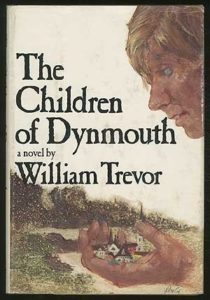 This is a very British tale by a very British author, an acquired taste, I believe. You must appreciate understatement and dry wit to find it engaging, and you also must be able to bulldoze past a mind-numbing batch of opening pages documenting the town’s scenery. It’s a very slow starter but picks up after the first quarter.
This is a very British tale by a very British author, an acquired taste, I believe. You must appreciate understatement and dry wit to find it engaging, and you also must be able to bulldoze past a mind-numbing batch of opening pages documenting the town’s scenery. It’s a very slow starter but picks up after the first quarter.

 My problem now is that the pitch that “worked” at the conference has only a very loose connection to the actual manuscript. I’ve got the main ideas, the characters and locations, but the story line is not the one I started with. Now I’m furiously rewriting my query letter, synopsis and first three to bring them into alignment with the pitch. Then I face the daunting task of rewriting the whole manuscript to match.
My problem now is that the pitch that “worked” at the conference has only a very loose connection to the actual manuscript. I’ve got the main ideas, the characters and locations, but the story line is not the one I started with. Now I’m furiously rewriting my query letter, synopsis and first three to bring them into alignment with the pitch. Then I face the daunting task of rewriting the whole manuscript to match. People don’t go to the movies anymore, not in the numbers they used to. They’re ‘staying away in droves.’ Part of that is price, but also the advent of large television screens and home theaters.
People don’t go to the movies anymore, not in the numbers they used to. They’re ‘staying away in droves.’ Part of that is price, but also the advent of large television screens and home theaters. So the reason streaming video doesn’t work is because of the catalogs. They are not well-indexed and tagged and therefore almost impossible to search if you want anything other than the latest cartoon or monster movie.
So the reason streaming video doesn’t work is because of the catalogs. They are not well-indexed and tagged and therefore almost impossible to search if you want anything other than the latest cartoon or monster movie. I recently purchased a smallish second car when my old Scion xB was eaten by rats. They didn’t do serious damage, just nibbled the insulation off some wires, but they got inside the cabin and stunk it up like an abandoned carcass. No amount of carpet shampoo or detailing could make that right. So it was new car time.
I recently purchased a smallish second car when my old Scion xB was eaten by rats. They didn’t do serious damage, just nibbled the insulation off some wires, but they got inside the cabin and stunk it up like an abandoned carcass. No amount of carpet shampoo or detailing could make that right. So it was new car time. I learned, for example, from a garage mechanic, not from any online research, that the battery packs in a Toyota Prius cost about $5,000 to replace, and there are two of them. They last about five years, putting out less and less power with each charge until finally you have to replace them. Maybe the car is only designed to last 5 years, but in my mind, that’s a $10K hidden cost of ownership that does not appear with the sticker price. I don’t know what the comparable numbers would be for a Bolt or a Volt or a Leaf, or any of the others, and nobody will say.
I learned, for example, from a garage mechanic, not from any online research, that the battery packs in a Toyota Prius cost about $5,000 to replace, and there are two of them. They last about five years, putting out less and less power with each charge until finally you have to replace them. Maybe the car is only designed to last 5 years, but in my mind, that’s a $10K hidden cost of ownership that does not appear with the sticker price. I don’t know what the comparable numbers would be for a Bolt or a Volt or a Leaf, or any of the others, and nobody will say. I have several Kindles and I also sometimes read e-books on a tablet, but every time, it’s an unpleasant experience.
I have several Kindles and I also sometimes read e-books on a tablet, but every time, it’s an unpleasant experience. Reading a book, for me is a whole-body immersive experience that an e-book just cannot deliver. E-books are enormously popular because the producers of books love them. The incremental cost of production is very close to zero. How wonderful for them. For me, the benefits are just not there.
Reading a book, for me is a whole-body immersive experience that an e-book just cannot deliver. E-books are enormously popular because the producers of books love them. The incremental cost of production is very close to zero. How wonderful for them. For me, the benefits are just not there.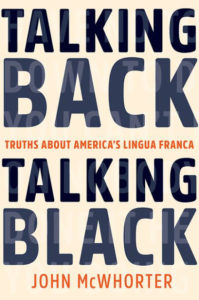 Is Ebonics a language? It was popularized as a distinct language spoken by some American African-Americans in the 1980’s and 90’s, yet another note in the culture war symphony.
Is Ebonics a language? It was popularized as a distinct language spoken by some American African-Americans in the 1980’s and 90’s, yet another note in the culture war symphony.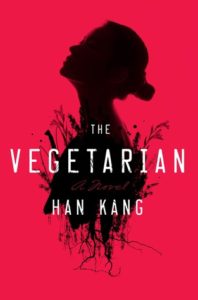 I usually have good luck with Man-Booker Prize-winners, but not this time. The Vegetarian is a story of a woman who goes insane. At the current time, medical science does not, for the most part, understand insanity, its causes or cures. So to have a character “go” insane is simply to abrogate one’s responsibility as a writer to provide proper motivation. Hey, she went insane – no explanation needed for her behavior, no matter how weird or erratic. To me, that’s a wobbly crutch for any writer, almost as bad as “…it was all just a dream after all.”
I usually have good luck with Man-Booker Prize-winners, but not this time. The Vegetarian is a story of a woman who goes insane. At the current time, medical science does not, for the most part, understand insanity, its causes or cures. So to have a character “go” insane is simply to abrogate one’s responsibility as a writer to provide proper motivation. Hey, she went insane – no explanation needed for her behavior, no matter how weird or erratic. To me, that’s a wobbly crutch for any writer, almost as bad as “…it was all just a dream after all.”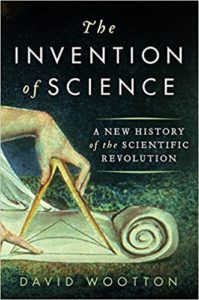 This monster book is actually an easy read because the concepts are not difficult. It is a history of the scientific revolution, which took place in Europe in the decades around 1600. The so-called revolution was a change in world-view among the intelligentsia that developed incrementally, not analogously to a sudden political revolution. The scientific revolution was stealthy and few people recognized it was even happening.
This monster book is actually an easy read because the concepts are not difficult. It is a history of the scientific revolution, which took place in Europe in the decades around 1600. The so-called revolution was a change in world-view among the intelligentsia that developed incrementally, not analogously to a sudden political revolution. The scientific revolution was stealthy and few people recognized it was even happening.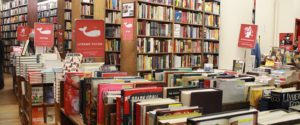 Recently I was looking for some books and as usual, I first tried to shop at bookstores in my community. Did it work out? No. I scored only one for seven and bought the rest online.
Recently I was looking for some books and as usual, I first tried to shop at bookstores in my community. Did it work out? No. I scored only one for seven and bought the rest online. Only a few bookstores I know of still capture that “good ol’ bookstore experience” of yesteryear: Powell’s in Portland, Oregon, and the Strand in Manhattan are two. Elliott Bay Books in Seattle used to be on the list but recently their inventory has narrowed significantly. Even Powell’s, on my last visit, seemed much thinner than I remember. Inventory is expensive, I know.
Only a few bookstores I know of still capture that “good ol’ bookstore experience” of yesteryear: Powell’s in Portland, Oregon, and the Strand in Manhattan are two. Elliott Bay Books in Seattle used to be on the list but recently their inventory has narrowed significantly. Even Powell’s, on my last visit, seemed much thinner than I remember. Inventory is expensive, I know.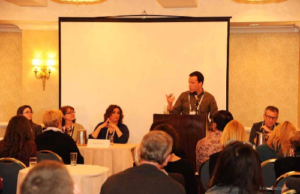 community meeting space, which is sorely lacking in most towns and cities. The space can be used for traditional book release events and signings but also for readings by local and other authors, kids’ book events, and so on. This should be a large community space, not a cramped aisle between shelves with a few chairs crammed in. Big and open (though surrounded by books) with comfortable (padded) folding chairs. The space should be configured so it can be redeployed, perhaps with sales tables on wheels when not in use. Prairie Lights in Iowa City does a good job of this.
community meeting space, which is sorely lacking in most towns and cities. The space can be used for traditional book release events and signings but also for readings by local and other authors, kids’ book events, and so on. This should be a large community space, not a cramped aisle between shelves with a few chairs crammed in. Big and open (though surrounded by books) with comfortable (padded) folding chairs. The space should be configured so it can be redeployed, perhaps with sales tables on wheels when not in use. Prairie Lights in Iowa City does a good job of this.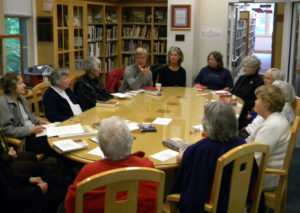 Conclusion: I don’t spend much of my book-buying budget at physical bookstores because generally they’re a bad experience. It doesn’t have to be that way. I think there could be a future for bookstores if they get their heads out of the past.
Conclusion: I don’t spend much of my book-buying budget at physical bookstores because generally they’re a bad experience. It doesn’t have to be that way. I think there could be a future for bookstores if they get their heads out of the past.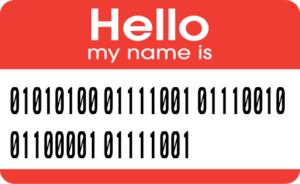
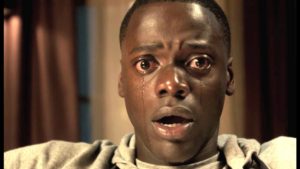 I don’t normally do movie reviews on this site, but this film was related to a question I had about a particular genre of writing, the horror genre.
I don’t normally do movie reviews on this site, but this film was related to a question I had about a particular genre of writing, the horror genre.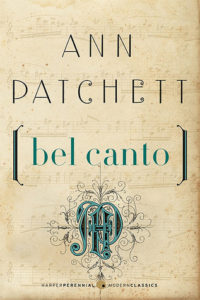 Fifteen international world-travelers attend a gala party in the presidential palace of a South American country to hear a famous American opera singer perform. The palace is stormed by armed terrorists who hold the party-goers hostage while they negotiate with the government over four months. During that time of confinement, relationships develop.
Fifteen international world-travelers attend a gala party in the presidential palace of a South American country to hear a famous American opera singer perform. The palace is stormed by armed terrorists who hold the party-goers hostage while they negotiate with the government over four months. During that time of confinement, relationships develop.